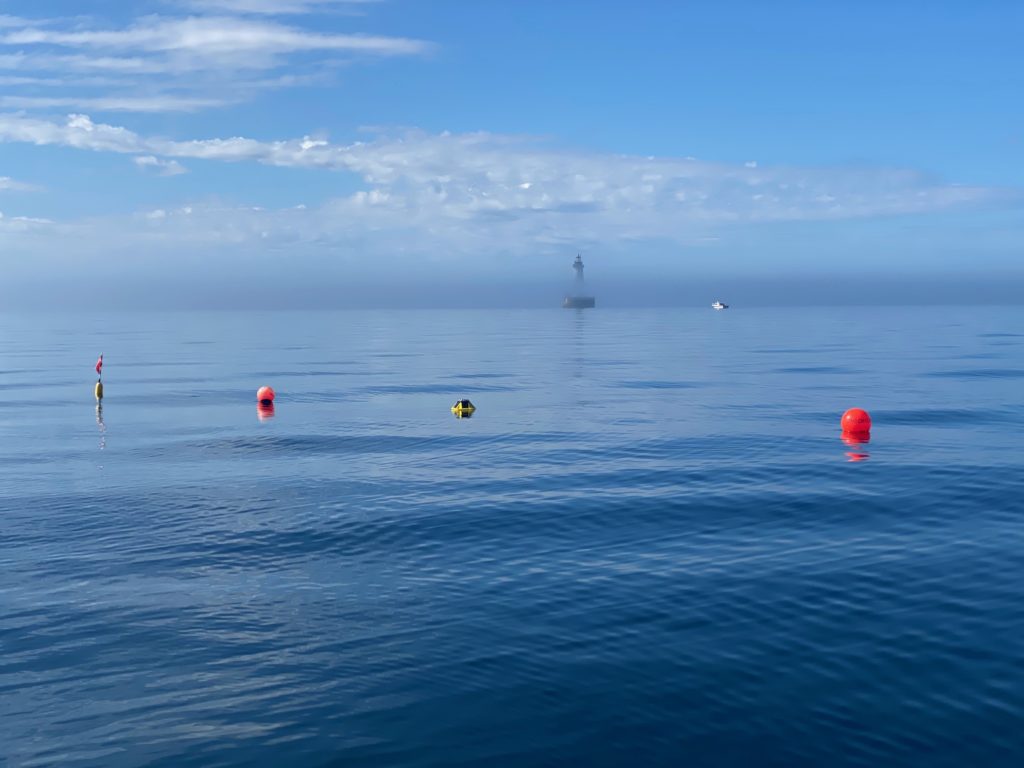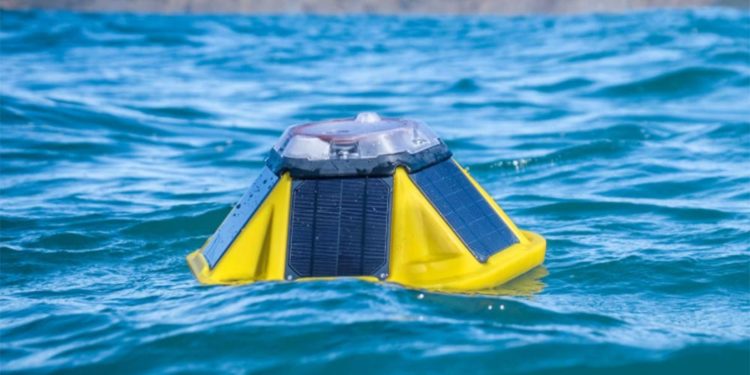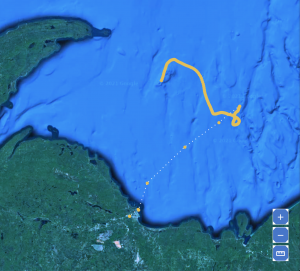
Later this month, a buoy will be set loose in Lake Superior to drift wherever the wind and waves will take it.
In a collaboration between the Great Lakes Observing System (GLOS) and Michigan Technological University, researchers will release a basketball-sized Spotter buoy near the North Entry of the Portage Canal, along the Keweenaw Peninsula and allow it to drift freely for 1-2 weeks. As it travels, it will measure important details of the wind, waves, water temperature, and currents.
“Understanding currents is of importance not only to recreational boaters, anglers, and the shipping industry, but also helps trace the movement of contaminants and sediments,” says Ana Sirviente, Chief Technology Officer at GLOS. “Drifters are very handy for this as their tracks can also be used to validate and improve forecasts of complex water movement in the Great Lakes.”
Michigan Tech Researcher John Lenters hopes that this unanchored trip will result in a better understanding of the strength and variability of the Keweenaw current, which is prevalent in this part of the lake.

”There’s a fairly persistent SW to NE current along this part of the Keweenaw Peninsula,” says Lenters, “but aside from an intensive, interdisciplinary study conducted about 20 years ago, we know relatively little about the behavior of this current, or even the circulation of Lake Superior in general.”
The GLOS team reached out to Lenters in 2020 to partner on this project to provide a real-world test for the development of the Seagull IT platform.
“Transforming data into information is critical to the work GLOS does,” says Sirviente. “As part of the development of Seagull, there is an opportunity to implement new data ingestion processes and visualization tools. Testing them is key to building a successful information platform capable of serving data collection, management, and sharing needs among a wide range of Great Lakes’ stakeholders.”
As it travels, the drifter buoy will transmit data every 30 minutes on wave height, period, and direction, wind speed and direction, near-surface water temperature, as well as location.
And this won’t be Lenters’ first experience with this kind of drifter buoy.
“We had a prelude to this experiment last year,” says Lenters, “when a Spotter buoy near Stannard Rock broke free of its mooring during a Halloween gale and went on a circuitous 27 mile journey over a five day period.”

The Stannard Rock Spotter, supported by funding from MTU and the Cooperative Institute for Great Lakes Research, was recovered after its eventful first deployment and will be re-deployed this year.
Those interested in watching this year’s drifter buoy’s journey can view it on the Sofar Dashboard.
Once satisfied with the drifter data, Lenters and his team will retrieve the buoy and anchor it near Copper Harbor, MI through the fall to support recreational boaters, ferry line operations, and commercial shipping. Live data will be available at the link above and on its station page on GL Buoys. (Note: The link will not be active until the buoy is anchored in Copper Harbor.)
The buoy will feature Sofar Ocean’s smart mooring system. This particular buoy includes a pressure and temperature sensor mounted at the bottom of the mooring line as well as two additional temperature sensors at different depths along the line. This will be one of several smart mooring systems in use for the first time in the Great Lakes this year.
If the buoy washes ashore or otherwise runs into trouble, the team is asking anyone who sees it to contact John Lenters at jdlenter@mtu.edu.
Find live buoy data from all five Great Lakes at glbuoys.glos.us.
